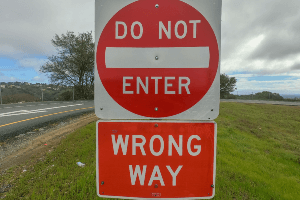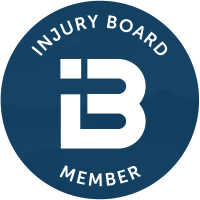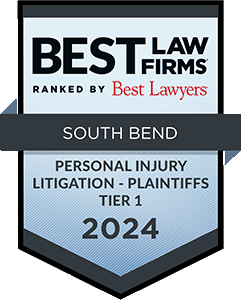 Wrong-way accidents are becoming more common, and officials in Indiana are taking some steps to try and combat them.
Wrong-way accidents are becoming more common, and officials in Indiana are taking some steps to try and combat them.
If you were injured in a wrong-way crash, you may have the right to pursue compensation from the at-fault driver. Call our South Bend auto collision lawyers today to discuss your claim during a free consultation. We are prepared to determine what legal options may be available to you. For decades, our lawyers have helped accident victims recover the compensation they need.
Below, we discuss wrong-way collisions and what types of drivers more commonly cause these types of accidents.
Where Are Wrong-Way Collisions Most Common?
The National Transportation Safety Board (NTSB) conducted a special investigation into wrong way driving to determine where it commonly occurs and what damage could result from a collision. The investigation found that wrong-way drivers are most likely to pop up in urban areas and highways.
The reason wrong-way driving is more common in urban areas is because there is a greater chance of drivers accidentally turning into a one-way road.
On highways, people may accidentally drive onto the wrong on-ramp. Once a driver is on the highway, it could be more difficult to turn around before a collision occurs.
What Steps Are Indiana Officials Taking to Combat Wrong-Way Driving?
In 2020, Indiana installed three Wrong-Way Driver Detection systems on the Indiana Toll Road. After a successful rollout of the system, the International Bridge, Tunnel and Turnpike Association (IBTTA) gave the green light to add another system at a different location in January 2023.
Indiana Toll Road now has four locations where there is a Wrong-Way Driver Detection system in place, including:
- Exit 56 Eastbound on Interstate 80, at the Rolling Prairie Travel Plaza (3 South Travel Plaza) in Rolling Prairie, Indiana
- Exit 83 Eastbound on I-80, at the Capital Avenue off-ramp (Mishawaka Toll Plaza) in Mishawaka, Indiana
- Exit 83 Westbound on I-80, at the Capital Avenue off-ramp (Mishawaka Toll Plaza) in Mishawaka, Indiana
- Exit 5 Eastbound on I-90, at the Calumet Avenue Eastbound off-ramp in Calumet, Indiana
The system uses thermal detectors and high-speed cameras to determine whether a vehicle is entering the highway in the wrong direction. Then, the driver is notified of being on the wrong side of the road by flashing lights, and state troopers are alerted to the vehicle. If the driver does not self-correct, messages are posted on the Toll Road’s electronic signs to warn other drivers.
Between 2021 and 2022, the system detected 97 wrong-way drivers, 95 of whom self-corrected.
Types of Drivers Who May Be Liable for a Wrong-Way Crash
In places like South Bend, where a nearby college campus attracts out-of-towners, there is an increased risk of drivers who are unfamiliar with the roads. This makes it easier for drivers to incorrectly enter a highway or turn onto a one-way street.
However, those who are more likely to drive on the wrong side of the road are not generally tourists. According to the NTSB investigation, intoxicated drivers make up a substantial proportion of wrong-way drivers. In its analysis of wrong-way collisions that resulted in at least one fatality, 60 percent of wrong-way drivers had some indication of alcohol impairment.
Distracted drivers may also get onto the wrong side of the road and cause a collision. If road conditions are poor, a driver may not be able to see a “Do Not Enter” or “Wrong Way” sign. This does not excuse the individual from liability, though.
In some instances, a driver may cause a wrong-way collision if he or she tries to pass another vehicle on a single-lane highway.
Anyone who drives on the wrong side of the road and causes a crash is generally liable for damages. This includes whether the individual was unfamiliar with the area or was not able to see warning signs due to inclement weather.
What Types of Injuries Are Common After a Wrong-Way Collision?
When a wrong-way driver causes a crash, it is most likely going to be a head-on collision. These types of accidents may often result in serious injuries or death. Traumatic Brain Injuries are a common cause of wrong-way collisions, but victims may also experience things like:
- Spinal cord injuries
- Back injuries
- Organ damage
- Penetrating injuries
- Fractures/displaced fractures
- And more
Although a head-on collision is the most likely scenario, there are other types of collisions that may result, including the following:
- T-bone – if one driver swerves and manages to turn his or her vehicle 90 degrees, another vehicle may ram into the side of that vehicle
- Sideswipe – drivers trying to avoid the wrong-way vehicle may succeed in avoiding a head-on or T-bone crash, but the wrong-way vehicle may sideswipe their vehicle.
- Single vehicle – just as in a T-bone crash, drivers may try to swerve to avoid the wrong-way vehicle and end up crashing into the median or some other fixed object.
Wrong-way drivers are also more likely to cause a multi-vehicle pileup, as drivers try to avoid the vehicle and swerve all over the place.
We Are Ready to Help. Call Today
If you were injured or lost a loved one in a wrong-way accident, our attorneys are prepared to help you.
We offer a free consultation to determine your legal options. There are no upfront fees while we work on your case. You only pay us when we successfully recover compensation for you.
No upfront fees. No risks. Call (844) 678-1800 today.











